Scanning through any material regarding eCommerce or business in general, you always come upon specific terms that keep repeating themselves. There’ll be talking about profit margins, input, and output, revenue, etc. Very often, you will find the word “conversions,” the final step in the process of selling a product and arguably, the most important one.
Where eCommerce is concerned, this step takes place when a potential customer has added their items to the cart and finalized their purchase by confirming payment. Everything up to that point is more or less irrelevant because the selling process wasn’t finished.
Many methods have approached raising your conversion percentages, but the most commonly accepted is through analytical study. Most prominently, Google Analytics is consulted, and it’s plain to see why. If you know the habits and preferences of your customers, it becomes much easier to predict their behavior and ultimately influence their decisions.
Also, Google has access to more data than anybody else can muster, and all sites that expect to be successful work to get better Google rankings, meaning their numbers are the only ones that matter. You could say it’s the eternal quest for “first page or bust” in most cases.
WordPress and WooCommerce

Most of today’s small and medium businesses use the combination of WordPress and WooCommerce for their online stores. Both are highly accessible, with low costs that will keep you under budget in all but the severe of cases. The downside is, you’ll have to be the one doing the work, i.e., outsourcing your site management could cost you much more than you’re probably willing or able to spend.
Because of this, there’s a whole market of plugins out there with the sole purpose of making your life easier by creating code-free user interfaces that will get you the same results as entire pages of code. One of these plugins that are designed for WooCommerce in mind is Conversios.
With it, you’re getting an entire-blown analytical and statistical juggernaut of a tool that will provide you with all the data you could ever need and enable you to bump those conversion numbers significantly.
Tracking From Start to Finish
The most important thing about the plugin is the close connection to Google, which has tangible benefits, especially if you’re using other Google platforms you can connect to. Furthermore, you’ll get access to unique branding opportunities on Google you wouldn’t get elsewhere. On top of that, your visitor’s entire “journey” is tracked.
Honestly, there’s so much data the biggest hurdle will be to separate the crucial one for your business from the trivial ones. You’ll know the times your pages are visited the most, which ones have a reasonable retention rate, what products are only browsed, but not bought, etc. All this data channeled in the right way can give you an advantageous position on the market compared to those who like to work “on a hunch,” thereby dismissing the numbers in the process.
Getting Started
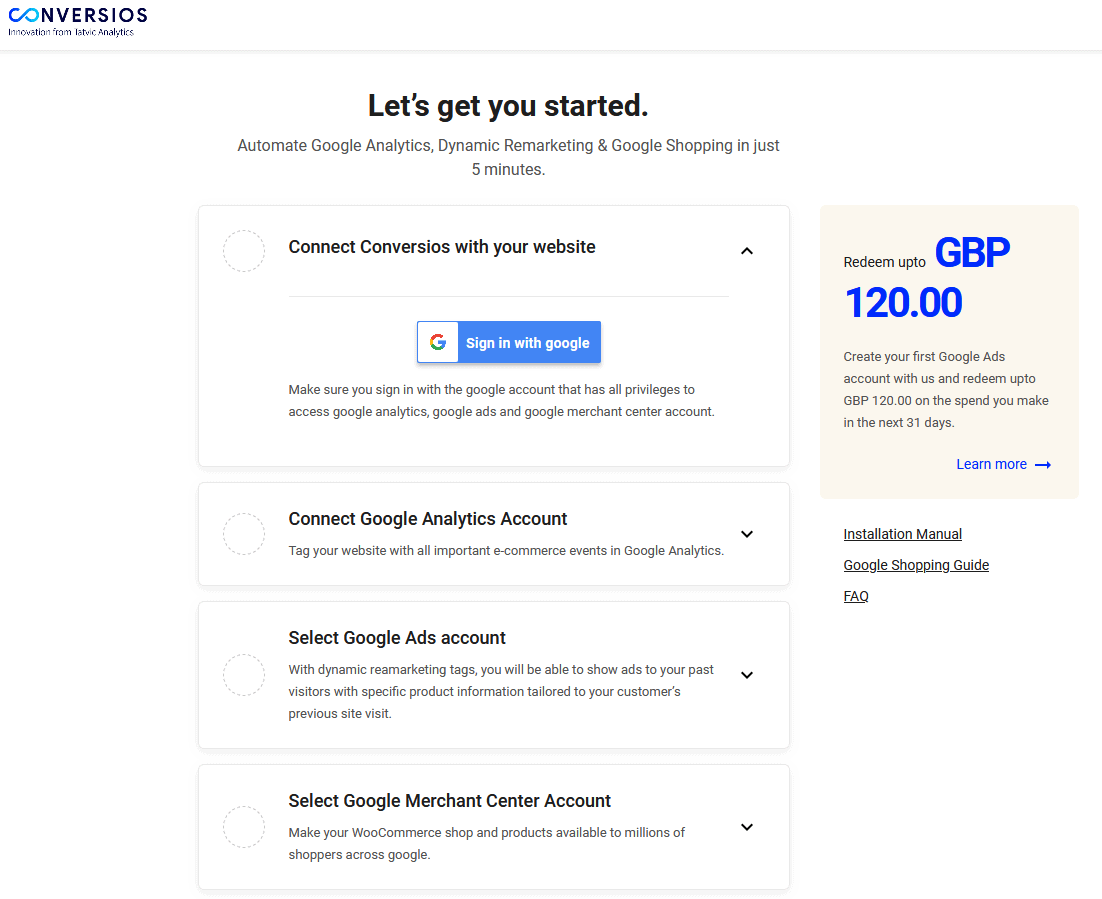
For this review, we’ll assume you’ve already installed both WordPress and WooCommerce along with any other plugin you might need or want, and we’ll focus solely on the plugin.
The first step is to connect your site to the various platforms you’ll need to gather data. You’ll be linking to:
- Conversios – the plugin itself and the things that hold everything else together
- Google Analytics account – the center of your customer data feedback which everything else stems from
- Google Ads account – provides marketing opportunities directly with Google making all actions twice as valuable
- Google Merchant Center account – connects your WooCommerce account and, more importantly, your products to Google making them accessible to the biggest audience imaginable.
Note that all of these connections can be set up with already existing accounts, or you could create new ones on the spot. Syncing everything into one big operation also simplifies things. There’ll be no more need to jump through multiple tabs and accounts every time you use a different aspect of Google services.
Instead, the plugin will act as your hub from where you can access everything with just a click of a button, emphasizing the user-friendly approach the devs are putting at the forefront.
Reports Galore
Once you have everything connected, it’s time you start reaping the benefits. With this plugin, it’s all about the reports, and there’s plenty to go around. You’ll be getting your reports through the Google Analytics 4 dashboard designed as an all-in-one tool, where you can conduct all your work from just one window.
As we’ve mentioned, the reports are one of, if not the most important thing about any business, but for eCommerce in particular, is the conversion rate data. In essence, it’s what this plugin is ultimately about. Before you start tinkering and getting those numbers up, however, it’s essential to know where you’re starting from.
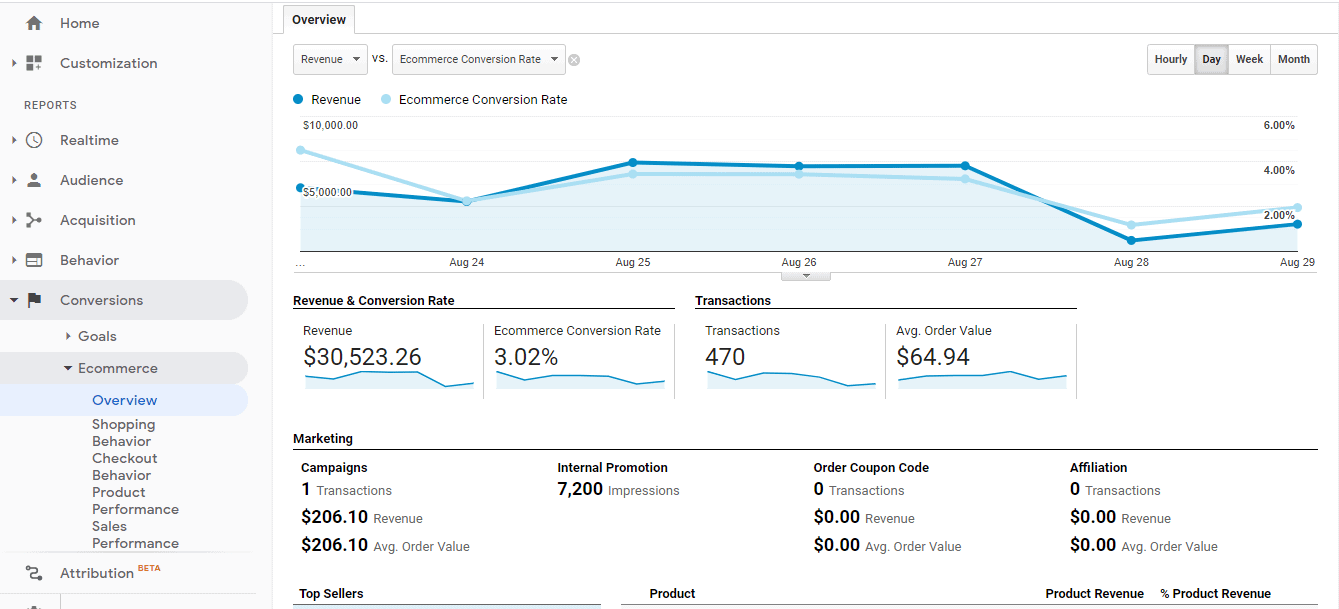
Therefore, you’ll need to study your conversion rate, both separate from other aspects of your business and connected to them. The most critical connection is between the conversion rate and revenue – if your top-selling products are also your premium/most expensive ones, you’re probably good; if your premium products aren’t performing as well as others, or at all, then it’s time for a strategy change.
Directly continuing with product analysis – you’ll need to focus your attention on product performance. Performance isn’t limited just to their sales numbers, but also how customers are buying them. Whether directly from the home page or through the product page, how many times they abandoned their carts, their share in overall product sales, and more.
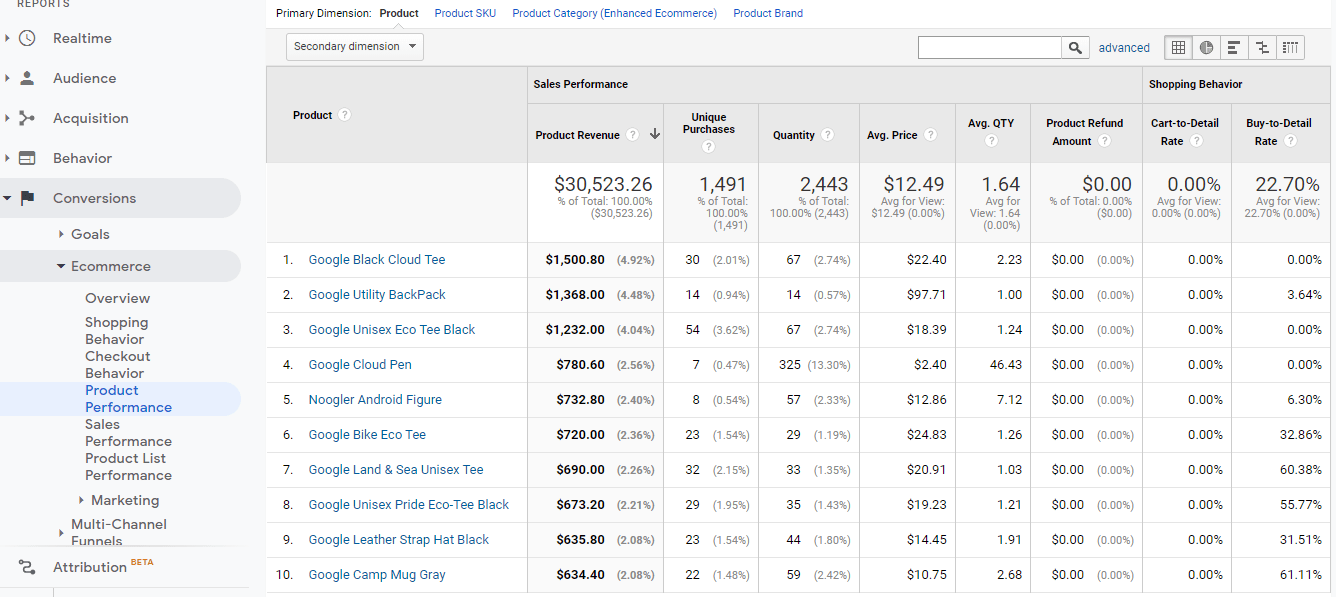
Such data enables you to see which products to focus on even more and which to let go of. Additionally, you can use this information to “piggyback” your products that aren’t performing well with those that are, to give them a boost – creating bundles, or giving away discounts to the latter if you purchase the former is just a couple of ideas worth giving a chance.
Another thing regarding products that should be of particular interest is the checkout stage of the buying process. To know how well a product is performing, you’ll need to consider the view-to-cart/conversion ratio, which products are abandoned, and if they’re left singularly or as a part of a more significant potential order. This data can prove vital with, among other things, forming your product prices that can then bump sales for the better.
Even the checkout form can be viewed individually, seeing the number of payments done (and compared to other time intervals), the number of reviews that have been made for the sold product, the number of sessions that have resulted in a transaction/conversion, etc.
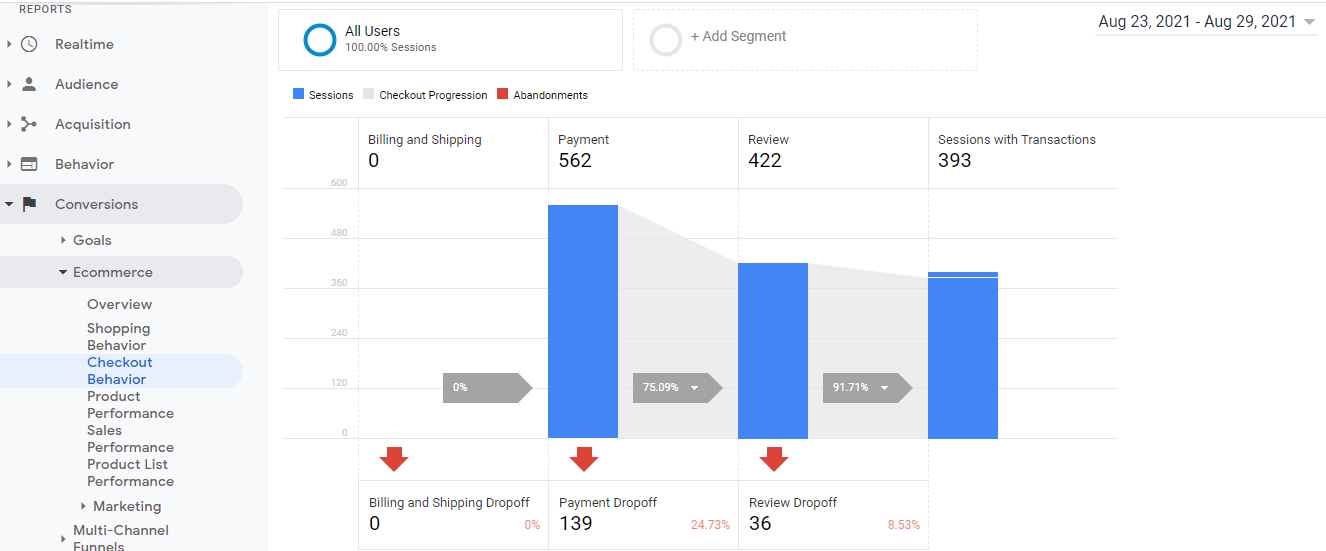
Once again, it’s essential to know your customers’ behavior if you’ll ever stand a chance of molding your site around their preferences. With eCommerce, like any other business that deals with customers directly, going headfirst through a wall just because you decided, at one point, how you’ll go about running your store/site is a bad idea.
Your selling methods, marketing campaigns, even frontend site display needs to change and evolve, the same way your customers are changing. Banking that you’ll always have a small but loyal following is essentially just limiting your business from growing and making the margin for error minimal – the smaller your market, the bigger the chance for even slight changes to cause significant problems.
Moreover, reports don’t end with your product and site analysis but also extend to your customers. While you can’t approach each individual, it helps to bunch them into groups with more common defining characteristics like location and language, gender, age, etc.
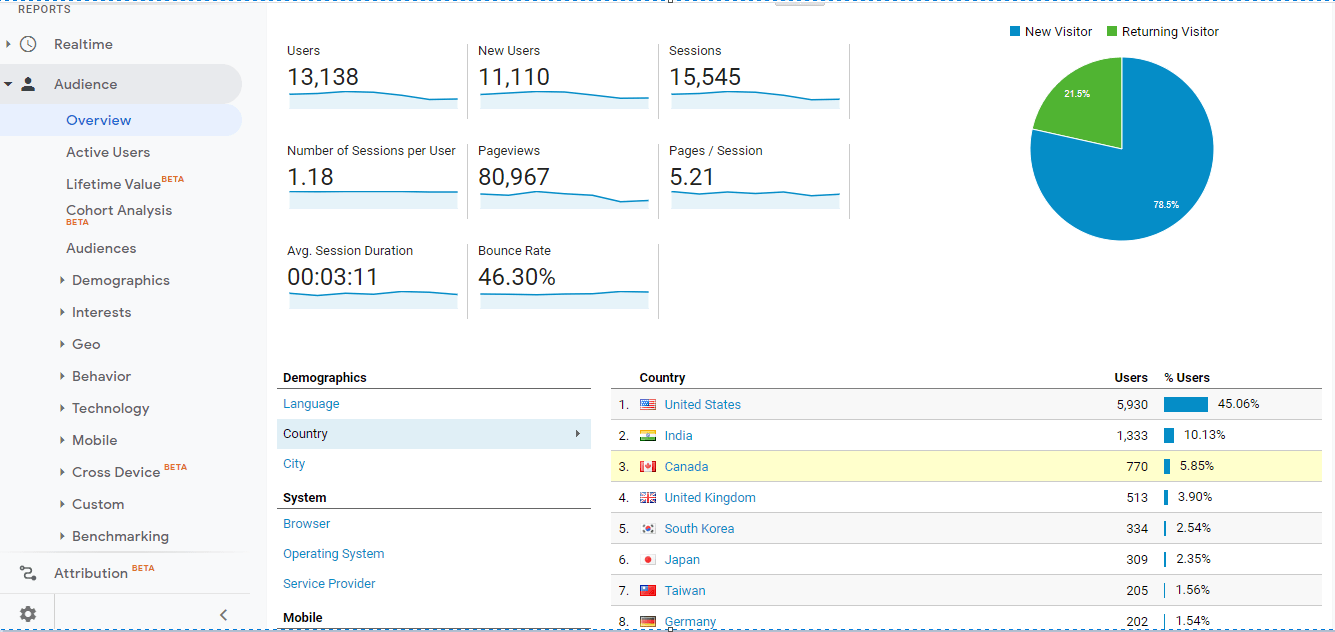
Through Google Analytics, you’ll be able to access all that information, which in turn helps you interacting with them. For example, you could create campaigns based solely on the countries the majority of your customers come from – crate unique campaigns around Thanksgiving or the 4th of July that are both localized to the US. At the same time, you’ll offer a more personalized touch to your site and directly affect your revenue (for the better, of course).
Outside of your customer’s basic information, it’s essential to track their behavior as well, and not just limited to the conversion rates, but their entire interaction with your site.
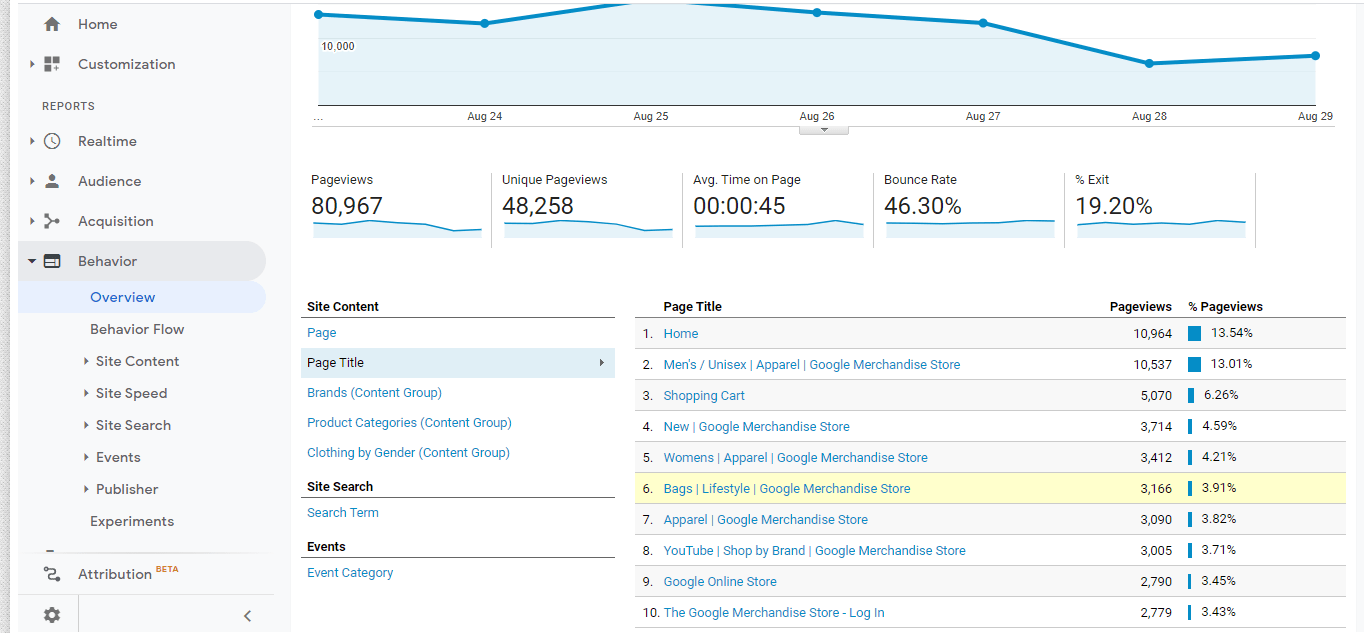
See how much time they spend browsing your pages before making a purchase or leaving without making one. Also, find out the most popular pages (these can be used for promotional purposes of your other products), along with the least popular (perhaps cutting them entirely), and much more.
The final report worth highlighting is the acquisition report, which, as the name suggests, focuses on the source of your conversions, i.e., how customers are getting to your pages and how often does each source translate to a sold product.
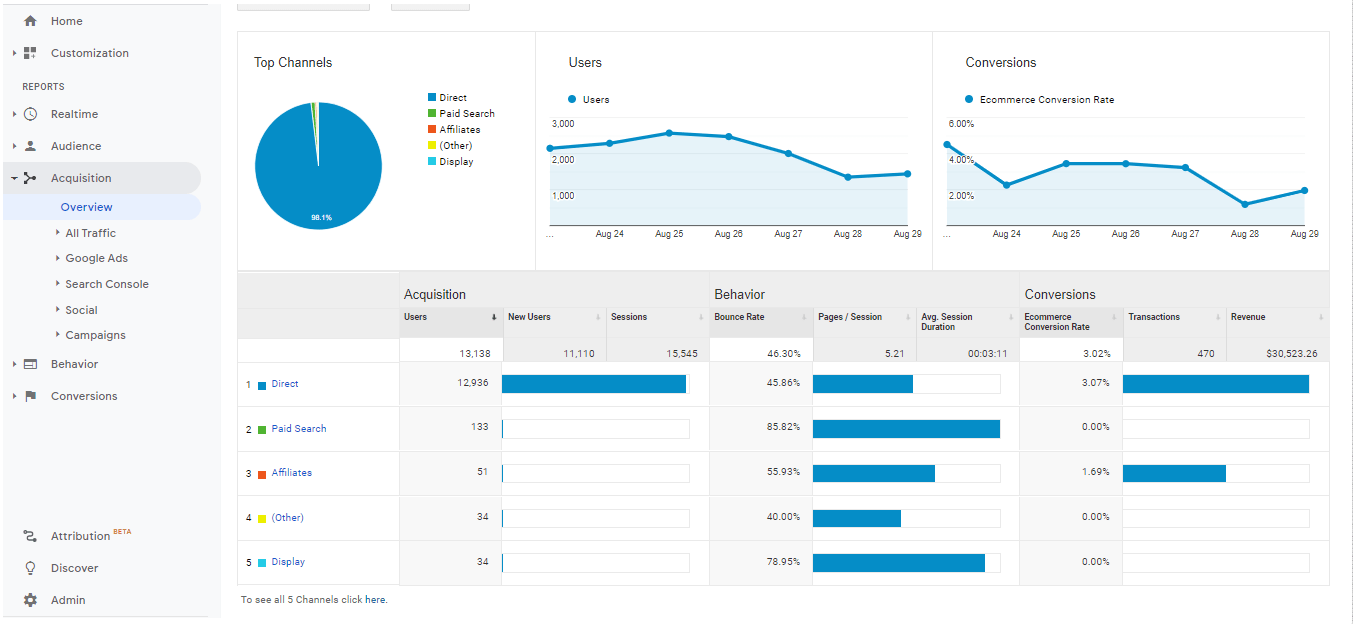
This gives you great insight into how to change your marketing habits. If paid searches aren’t performing as organic traffic (or at around the same levels), it’s time to reassess their worth, specifically budget allocation. You tend to expect more from things you fund more, so it’s always wise to know where you might be overspending to redirect those funds to other aspects.
More Than Analytics
Up until now, everything was about the analytical reports you can use to create a site running on optimum efficiency based on conversion rates, product performance, and customer behavior. But with the plugin’s integrations with Google Merchant Center and Google Ads, you’ll get to make your presence felt on the world wide web’s prominent location.
Google Ads provides a great way to advertise your products with minimal effort to a truly massive number of people. Even though these campaigns are almost always successful, there are degrees within which the success can be measured. A whole new world of statistical data opens up to you by connecting the plugin with Google Analytics and Google Ads.

You’ll be able to track how your campaigns affected your traffic directly (how many people got to your pages by clicking on those specific links) and, ultimately, how many of them went on to make purchases. Naturally, not all products will perform in the same way, and this lets you double down on those that have worked out or abandon further marketing for those that have bombed.
In addition, you’ll get to enable remarketing tags that are automated for all your pages, along with dynamic remarketing tags for events such as “view_item” or “add_to_cart.” Whenever a potential purchase is abandoned, you’ll have a system in place looking to bring back those customers to potentially recover their cart or look at items they’ve browsed once more with the idea they might go through with the purchase. Getting back these customers should be a crucial part of your business strategy.
The Google Merchant Center is all about your products. You’ll first need to sync up your WooCommerce product database with that of the Center, and that’s done by mapping the attributes of your products with the default Merchant Center attributes.
It would be convenient to use the same characteristics on both platforms, but it’s not obligatory. Note that categorizing your products and their attributes in a standardized way will save you time and effort long-term, even if you stop using the Merchant Center at some point.
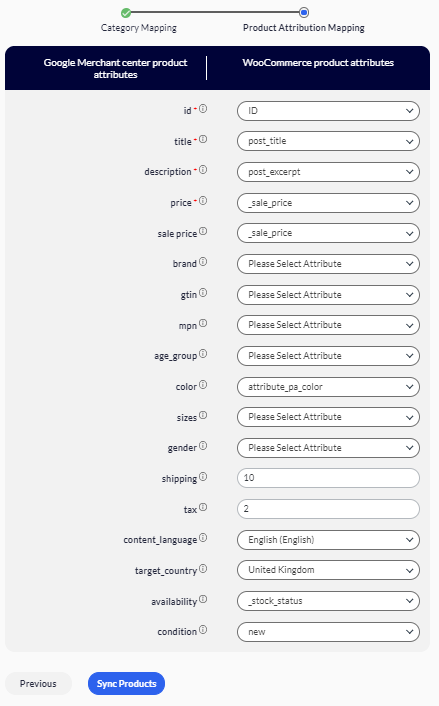
These attributes are then used to format your product information for Google Ads, which, as you know by now, will be the focal point of your marketing. After you’ve completed the process for all the products you wanted, you can view and access them through the list located in the Google shopping tab (product sync section).
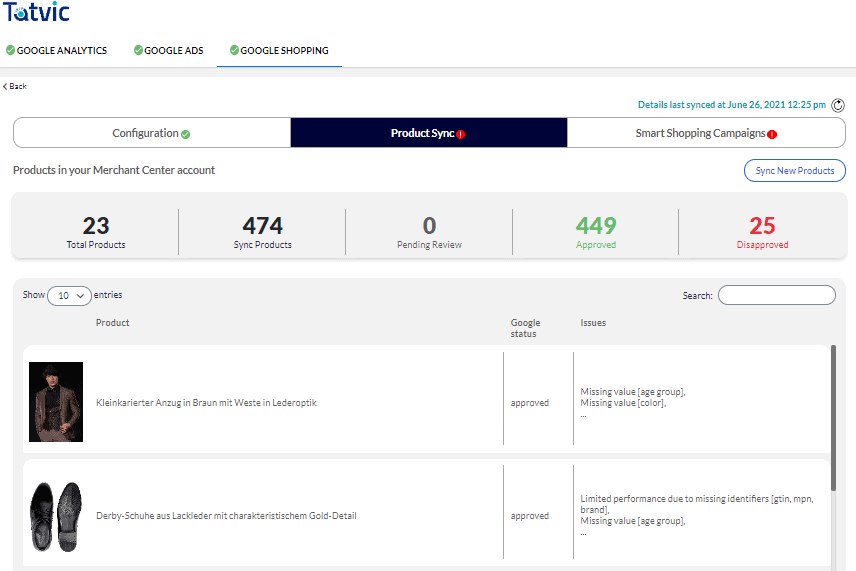
The next logical step for your products is creating Smart Shopping campaigns that take advantage of everything Google offers, including Google Search Partners, Google Display Network, YouTube, and Gmail. Simply going through the names on that list is enough to grasp the scope and reach your campaigns will have. From the backend, you can track every campaign to the smallest detail, but if you’ve been reading carefully, by this point, that comes as no surprise.
Going Pro
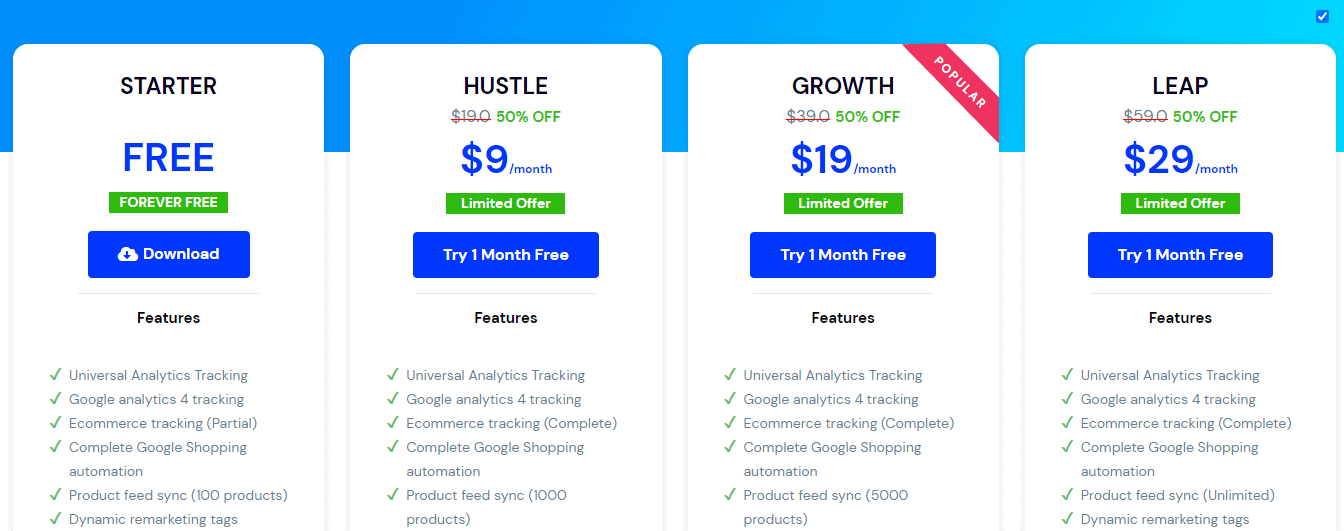
This plugin offers a free version and three subscription tiers. For your basic needs, the free version is just fine, but if you’re looking to unlock everything truly, you’ll need to grab yourself one of the premium tiers. The main difference among the premium tiers is the number of products you’ll get to sync within the Google Shopping tab.
In contrast, all other features are fully unlocked (with slight differences regarding support). On the other hand, the differences between the free version and premium versions are more palpable. Essentially, going premium gives you everything we’ve gone through up until now but additionally unlocks advanced features on every level – tracking, reports, capabilities with products, etc.
New added reports include the product list performance report, order coupon report, internal promotion report, product coupon report, and affiliate code report. While in no way essential, these reports can help in organizing both your in-house and external strategies.
Data tracking is enhanced by unlocking custom metrics tracking, 404 tracks, cross-device user tracking, etc. The more data you have, the easier it is to make informed decisions about your business. The added support is all about the expert help you’ll be getting in a one-on-one approach through the Google Analytics Audit, free consultations, a dedicated customer success manager, and 24/7 premium support.
When getting all of this support means is, in essence, a security blanket that you can turn to any time you’re feeling out of depth in any way. Most of the features we’ve covered up until this point have a little bit of premium sprinkled in them, but because everything is so intertwined, the paid tiers present something of a must to avoid finding yourself stumped at points where you’ve hit a paywall.
Summary
The Conversios plugin represents a robust analytical and marketing tool that can bring everything Google has to offer a site to your WooCommerce webshop. As we’ve said, the day of making decisions based on hunches and instinct is a thing of the past; to be successful, you need data and a way to interpret that data.
Conversios provides both, with the added Google advertising possibilities. Don’t sleep on this plugin because it can change your business from the smallest to the most significant things.
Used to write about games and gaming in general, but has since switched to testing and writing about web development software. Still plays a lot of games, just for the fun of it.
Latest posts by Matej Milohnoja (see all)
Where Should We Send
Your WordPress Deals & Discounts?
Subscribe to Our Newsletter and Get Your First Deal Delivered Instant to Your Email Inbox.
Thank you for subscribing.
Something went wrong.
Keep reading the article at WP Newsify. The article was originally written by Matej Milohnoja on 2021-09-16 01:00:51.
The article was hand-picked and curated for you by the Editorial Team of WP Archives.

